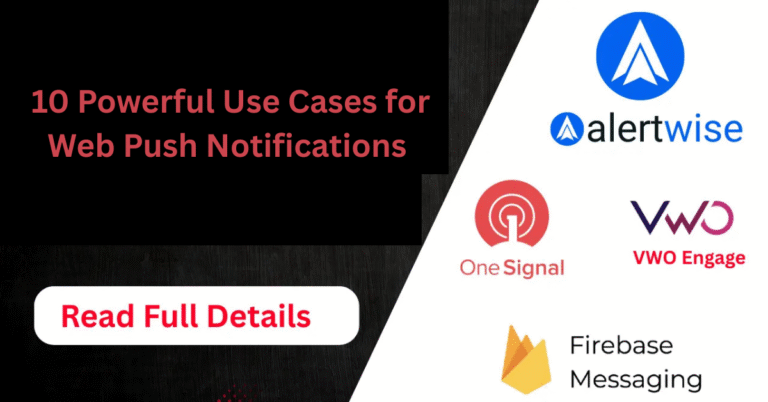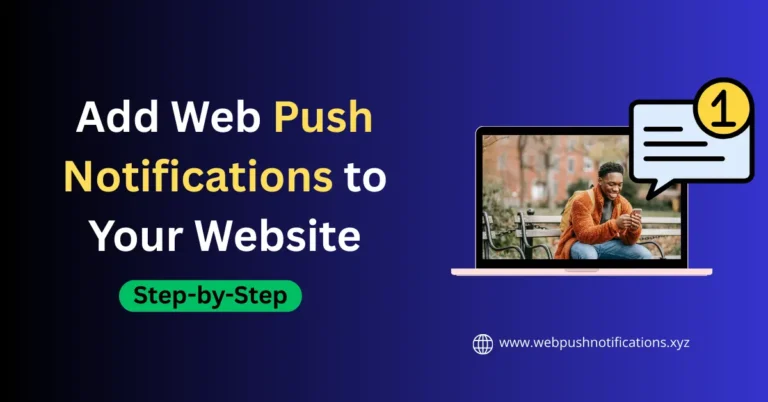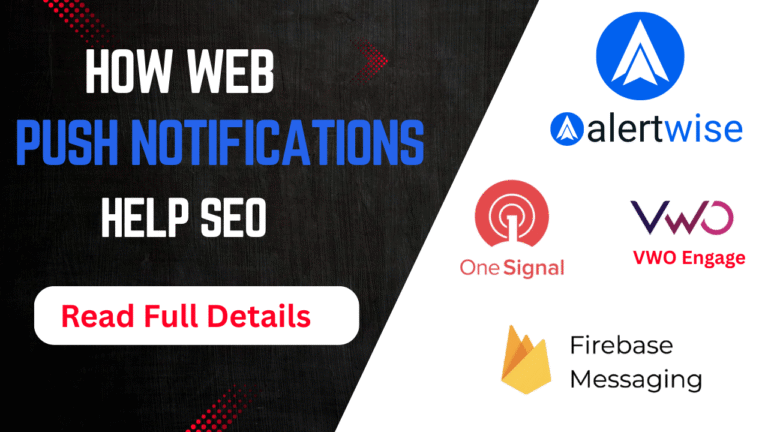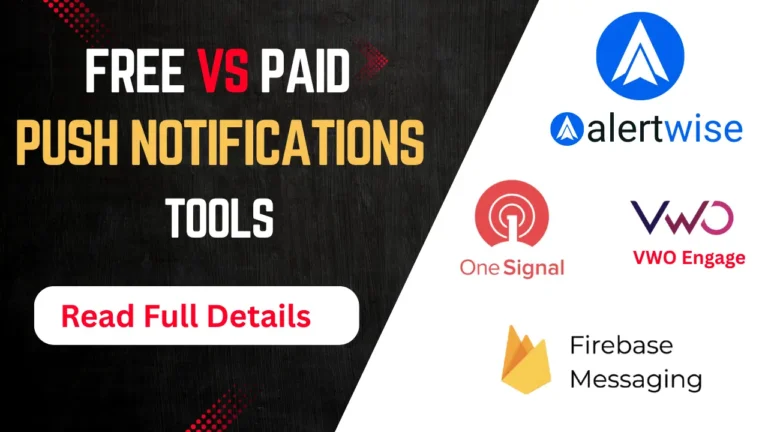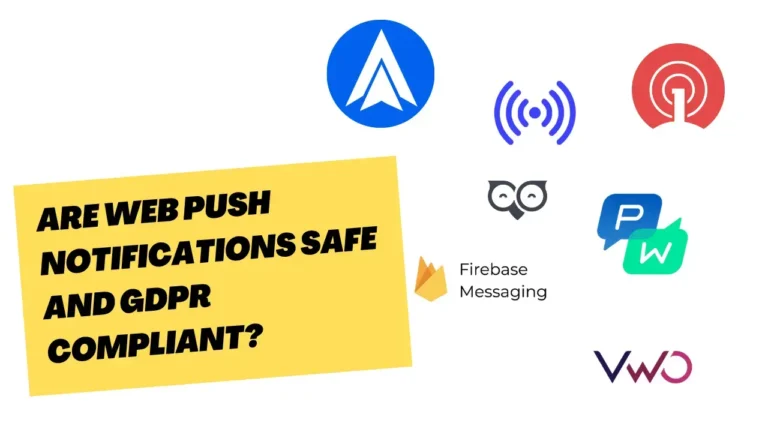Are Web Push Notifications Safe and GDPR Compliant?
Are Web Push Notifications Safe and GDPR Compliant? – In the digital age, businesses and websites are using new technologies to connect with users. One of the popular technologies is web push notifications. These notifications are sent directly to the user’s device, whether the user is active on the website at that time or not. Their functionality is great, but are they safe? And are they compliant with the rules of GDPR (General Data Protection Regulation)?
This article will answer these two important questions in detail, and also explain what businesses need to keep in mind so they can use web push notifications safely and legally correctly.
What are web push notifications?
Web push notifications are a type of alert sent by a website to a user’s browser. These notifications are displayed directly on the user’s desktop or mobile device, even if the website is not open.
Key Features:
- Permission based: User needs to give permission first.
- Real-time messaging: Ideal for sending marketing, offers, reminders, etc.
- Browser support: Chrome, Firefox, Safari, Edge, etc. support it.
How secure are web push notifications?
The web push notification mechanism is pretty robust in terms of security, but there are some nuances that need to be understood.
1. Permission-Based Model
First, the browser asks the user for permission to send notifications. This permission is taken through the option of “Allow” or “Block”. Unless the user “Allows”, no push notifications can be sent.
2. Require HTTPS
Web push notifications only work on HTTPS (Secure HTTP) sites. This means that the data is encrypted and no one can tamper with it in between.
3. Use of Service Workers
Web push notifications use a Service Worker, which is a JavaScript file that runs in the background and triggers notifications. There are special security measures in place to control this.
4. User is not identified
Push notifications do not require the user’s personal identification (PII – Personally Identifiable Information) while sending them. This makes them less risky.
5. Potential for spam and abuse
However, if not implemented properly, web push notifications can be used as spam. Sending repeated notifications or misleading content can pose a threat to users’ privacy and security.
What is GDPR?
GDPR (General Data Protection Regulation) is a data protection law implemented by the European Union (EU) on 25 May 2018. It aims to protect the personal data of EU citizens.
Key principles of GDPR:
- Consent – Explicit consent must be taken before collecting any kind of data.
- Transparency – The user should be told why and how his data will be used.
- Right to Access & Erasure – Users can view and delete their data.
- Data Security – It is mandatory to store and process data securely.
- Purpose Limitation – Data should be used only for the purpose for which consent has been given.
Are web push notifications GDPR compliant?
Web push notifications themselves do not violate GDPR, but how and in what way they are used determines whether or not they are GDPR compliant.
1. Consent is mandatory
Under the GDPR, “browser-based permission” is not considered valid consent unless:
- The user is not clear on what will be sent in the notification.
- The user is not given full details before giving consent.
This means that the website must show a custom consent banner before granting browser permission explaining what type of notifications will occur.
2. Disclosure of data collection
If web push notifications are performing any type of user tracking (e.g. behavioral patterns, location, IP), GDPR requires that this be clearly disclosed and consent be obtained.
3. Opt-out feature
According to GDPR, users must be given the option to opt-out of push notifications at any time. The simple solution is for users to block notifications in their browser settings, but it is ideal to provide the option at the website level as well.
4. Responsibility of the data processor and controller
If the website uses third-party web push services (e.g. OneSignal, PushEngage, etc.), it needs to ensure that the service is also GDPR compliant and that appropriate data processing agreements (DPAs) are signed.
Benefits and Risks of Web Push Notifications
| Pros | Cons |
| Real Time User Engagement | Possibility of spam |
| Increase in marketing and sales | User privacy at risk |
| Low cost, high impact | Possibility of GDPR violation |
| Better click-through rate than email | Dependence on third party |
Types of web push notifications
1. Browser push notifications
This is the most common type in which the website sends notifications to the user through the browser. It works on both desktop and mobile devices. Example: When you visit a news site like “NDTV” or “Jagran” and you see a pop-up – “Would you like to receive updates?”
2. In-app push notifications
This is mostly seen in mobile apps like Flipkart or Swiggy which inform you about new offers.
3. Transactional push notifications
When you take an action on a website – like a password reset or order confirmation – this is called a transactional push notification.
4. Segmented and personalized push notifications
Push notifications sent with the help of AI and Machine Learning that are based on user behavior, preferences, and location.
Web push notifications and tracking
Although push notifications don’t contain personal data like emails, they are still sometimes used for tracking:
- When did the user see the notification?
- From which device did he see it?
- Clicked or not?
- After how much time did he click?
This tracking provides behavioral data that can help brands make their messaging more effective. But if this data is not sufficiently anonymized, it may be considered personal data under the GDPR.
Recommendations for businesses
What to do
- Show clear and purposeful consent dialogs
- Only do the necessary tracking
- Give users an easy way to unsubscribe at any time
- Include a separate section for push notifications in the Privacy Policy
- Have a DPA (Data Processing Agreement) with all third-party services
What not to do
- Don’t trigger push notifications without consent
- Don’t store cookie-related data without permission
- Don’t ignore user requests to remove access or delete data
Conclusion
Web push notifications are a powerful and effective digital tool that allows users to send direct and timely messages. It is technically secure — provided HTTPS, browser permissions, and minimal data collection are followed.
However, when it comes to GDPR compliance, technical security alone is not enough. It requires that the website informs users about their rights, maintains transparency, and gives them control over when and how they want to receive notifications.

